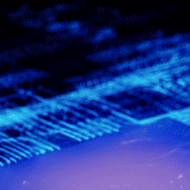News: Suppliers
13 August 2025
k-Space’s RHEEDSim software available for labs and classrooms
k-Space Associates Inc of Dexter, MI, USA — which produces thin-film metrology instrumentation and software — says that its new kSA RHEEDSim reflection high-energy electron diffraction (RHEED) simulation software is now available for both labs and classrooms.
“Almost immediately after launching kSA RHEEDSim, we heard from many of our customers asking for a version to support both their research teams and students,” notes CEO Darryl Barlett.
kSA RHEEDSim for Labs supports up to six simultaneous users. kSA RHEEDSim for Classrooms supports up to 50 simultaneous users.
kSA RHEEDSim is also available as a fully integrated software add-on with thhe kSA 400 analytical RHEED system.
With kSA RHEEDSim, users can click to select the crystal surface and experimental parameters. The software renders the predicted pattern based on a kinematic, single scattering electron beam diffraction model.
kSA RHEEDSim can simulate any crystal surface that can be defined by a periodic 2D surface lattice. Simulation possibilities range from basic simulated RHEED patterns of common structures, to complex patterns produced by reconstructions or complex surfaces, to dynamic simulations of changing phenomena, offering a resource for researchers and a teaching tool for students.
Also, with kSA 400 (claimed to be the world’s leading analytical RHEED system), it is said to be easy to compare your experimental RHEED patterns with the simulated RHEED patterns, and to track the behavior of RHEED under changing conditions.
k-Space says that kSA RHEEDSim is part of its ongoing commitment to help advance research using RHEED.
Additional feature highlights of kSA RHEEDSim include the following:
- visualize the 2D surface structure relative to the incident electron beam, enabling the user to see it update live as parameters are changed;
- visualize the 3D crystal structure for predefined or generated presets;
- define new surfaces to simulate from bulk crystal data loaded from CIF files or generated manually;
- overlay simulation output with other RHEED image data;
- approximate the effect of surface reconstruction.









